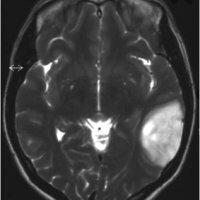Chemodectomy

Description
Chemodectomy - an oncological lesion in the neck. It develops from a specialized tissue( a sleeping glomus) located in the bifurcation of the carotid arteries. It can also develop from a vagus nerve, but this is rare.
Education has a round shape, dense fabric and a smooth surface. Clinical manifestations are associated with tumor localization.
The chemodectomy of the vagus nerve is manifested by neurologic or pharyngeal symptoms.
Reasons for
To date, there are no reliable causes of the disease. Scientists identify a genetic predisposition to this type of neoplasm. In addition, the risk factors are trauma, hereditary predisposition, the effect on the body of ionizing radiation.
This disease is diagnosed more often in female patients. The chemodectomy proceeds in a benign variant, but malignant tumors have also been observed.
Types of chemodectomy
The following types of chemodectomy have been established in clinical trials:
- Vagal nerve chemodectome.
- Malignant tumor of the carotid body.
Any option can be either benign, or malignant. When malignant, the tumor is actively divided, forming metastases in the lymphatic vessels. Every fifth benign tumor degenerates into a malignant neoplasm, creating a serious danger to the life of the patient.
Symptoms of
 Chemodectomy - formation on the side of the neck, but may appear inside the orbit, nasopharynx, middle ear, node of the vagus nerve. Clear contours does not have, smooth to the touch, with the skin and muscles does not grow together. When palpation feels its throbbing. For a long time, you can not show yourself uncomfortable feeling.
Chemodectomy - formation on the side of the neck, but may appear inside the orbit, nasopharynx, middle ear, node of the vagus nerve. Clear contours does not have, smooth to the touch, with the skin and muscles does not grow together. When palpation feels its throbbing. For a long time, you can not show yourself uncomfortable feeling.
Symptoms appear after education is visually noticeable:
- appears hoarseness;
- sensation in the larynx of an alien object;
- complicated swallowing of saliva;
- muscle atrophy in the neoplasm;
- deviation of the tongue from the midline;
- is caused by a cough with a slight pressure on the tumor.
Subjective symptoms include:
- headache;
- difficult swallowing of food;
- feeling dizzy.
Diagnosis
If a seal is found in the neck area, the surgeon should be consulted. After the examination, he will send the patient to the oncologist for a consultation to confirm or deny the alleged diagnosis.
For this, a number of instrumental examinations will be performed:
- ultrasound( reveals the structure of the tumor).
- Angiography( vascular study and location of education).
- Radiography( used as a comparative method to exclude other diseases).
- Biopsy( part of the tissue is given for histological analysis).
- MRI and computed tomography( in inconvenient cases for diagnosis).
Diagnosis chemodect is quite complicated. Correctly to define the diagnosis it is possible only at 40% of patients.
Treatment of
 Treatment of patients with a confirmed diagnosis is carried out only in the hospital, where there is the latest medical equipment.
Treatment of patients with a confirmed diagnosis is carried out only in the hospital, where there is the latest medical equipment.
The growth of neoplasm with the walls of the carotid arteries and the further germination of the interior significantly increases the risk in surgical treatment.
If tumor removal is impossible due to its anatomical location, the patient's condition is facilitated by radiation and chemotherapy.
Surgical treatment can be accompanied by removal of part of the carotid artery with its further prosthetics with a synthetic prosthesis or, more rarely, a large saphenous vein. The chemodectome of the vagus nerve is removed from the nerve part.
In malignant formations after operations, there is sometimes a relapse. In this case, repeated surgical intervention is required.
Along with specific methods of treatment, the patient is prescribed symptomatic therapy aimed at improving overall well-being.
Folk remedies
Chemodectomy treatment is only surgical. Even chemotherapy and radiotherapy with this disease do not give the expected result. And folk remedies for all cancer are contraindicated.
Complications of
The effectiveness of surgical intervention depends on the size of the tumor and the degree of its adhesion to adjacent vessels. The operation is fraught with some serious complications.
The most common complications are:
- bleeding;
- cerebrovascular accident;
- damage to the sublingual or vagus nerve.
Operative intervention is conducted in the community of vascular surgeons and oncologists, which expands the possibilities of intervention and gives a forecast for a successful outcome of the operation.
Prevention
Specific prevention of chemodectomy to date, scientists do not offer, because the etiology of the tumor process is not yet fully established.
To increase the chances of a full recovery, if you find the slightest seals in the neck area, you should contact a specialist.



